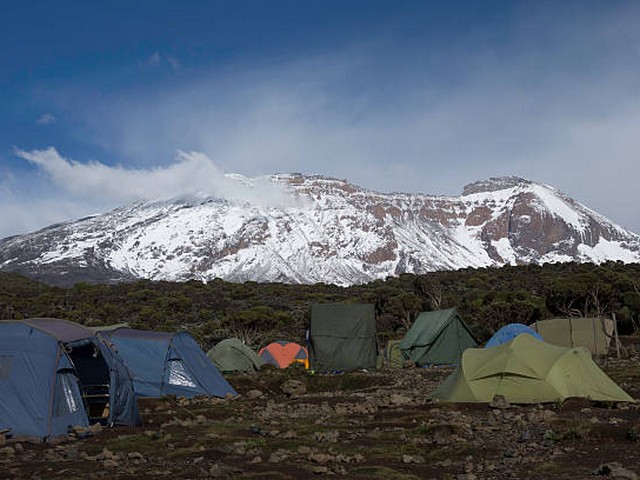How To Avoid Overexertion On Kilimanjaro: A Trekker’s Guide
Introduction
Scaling Mt. Kilimanjaro, the roof of Africa, is a dream for many adventurers worldwide. However, the exhilaration of reaching Uhuru Peak can be overshadowed by the physical demands of the trek. At Kilimanjaro Centre for Trekking and Ecotourism (KCTE), we understand that the key to enjoying this once-in-a-lifetime experience fully is to manage one’s energy wisely. Hence, we bring you an essential guide on how to avoid overexertion on Kilimanjaro, ensuring a memorable and successful climb.
Why Avoid Overexertion?
Overexertion on Kilimanjaro can lead to fatigue, altitude sickness, and even failure to reach the summit. Understanding your body’s limits and preparing adequately can make the difference between a rewarding trek and a painful ordeal. In this blog, we will explore tried and tested strategies to conserve energy and maintain optimum health as you ascend to the peak.
Pre-Climb Preparation
Start with Fitness
Begin your journey long before you set foot on the mountain. A regimen of cardiovascular exercises, strength training, and hiking practices should start months in advance. Simulate the climbing conditions as much as possible—train on inclines and possibly at altitude if accessible.
Know Your Route
Each route on Kilimanjaro offers different challenges and timelines. Whether choosing the Marangu, Machame, or Lemosho route, understanding the specifics of your chosen path helps in pacing yourself appropriately. KCTE provides detailed route advice to tailor your preparation effectively.
Medical Check-Up
Consult with a healthcare provider before embarking on this adventure. This step is crucial not only for your safety but also to understand how your body might react to extreme altitudes and exertion.
On the Mountain
Pace Yourself
"The slower, the better" should be your mantra. Kilimanjaro is not a race. Adopting a pace that allows you to breathe easily and converse without gasping is vital. Remember, conserving energy is key to avoiding overexertion.
Hydration and Nutrition
Drink plenty of water and eat balanced meals. Your body performs best when well-hydrated and fueled. KCTE ensures our climbers have access to ample water and nutritious meals that cater to high-energy needs.
Listen to Your Body
Recognize the signs of overexertion, including excessive sweating, shortness of breath, and extreme fatigue. Allow yourself to rest. Ignoring these signs can lead to severe altitude sickness.
Acclimatization
Take advantage of acclimatization days built into your climbing schedule. These days help your body adjust to the altitude and reduce the risk of acute mountain sickness (AMS).
Using Gear Wisely
Dress Appropriately
Layer your clothing to easily adjust to changing temperatures without expending unnecessary energy. Also, invest in good quality hiking boots and break them in well before your climb.
Pack Light
Every extra kilogram you carry drains your energy. Pack only essential items and make use of KCTE’s porter services to handle your gear, allowing you to focus on the climb.
At the Summit and Beyond
The Final Push
The summit night is the most grueling part of the climb. Keep a steady, sustainable pace, and focus on breathing deeply. Trust the training and preparation you’ve undertaken.
Post-Climb Recovery
Allow your body to recover after the descent. Post-climb yoga or light stretching can aid in muscle recovery. Reflect on the achievement, knowing you managed your energy wisely to conquer Kilimanjaro.
Call to Action
Are you ready to take on the challenge of Kilimanjaro with confidence and vigor? Join us at Kilimanjaro Centre for Trekking and Ecotourism (KCTE) to make your climbing experience both successful and enjoyable. We ensure that every detail is handled meticulously, allowing you to focus solely on your climb. Visit our website to learn more about our Kilimanjaro packages and start your journey to the peak with the best!
FAQs
Q1: How long does it take to prepare for a Kilimanjaro climb?
Typically, you should start preparing at least 6 months before your climb. This gives your body ample time to build the necessary strength and endurance.
Q2: What is the best time of year to climb Kilimanjaro?
The best times are during the dry seasons, from late June to October and from late December to early March.
Q3: Can beginners climb Kilimanjaro?
Yes, Kilimanjaro is a non-technical climb, and many beginners successfully summit each year. However, proper preparation and fitness are crucial.
Q4: How do I deal with altitude sickness?
Pace yourself, hydrate, and make use of acclimatization days. Recognize the symptoms early and communicate with your guide if you feel unwell.
Embark on your Kilimanjaro adventure with KCTE, where your dream climb becomes a reality. Remember, it’s not just about reaching the summit; it’s about enjoying the journey. Let us guide you safely and enjoyably to the top!




